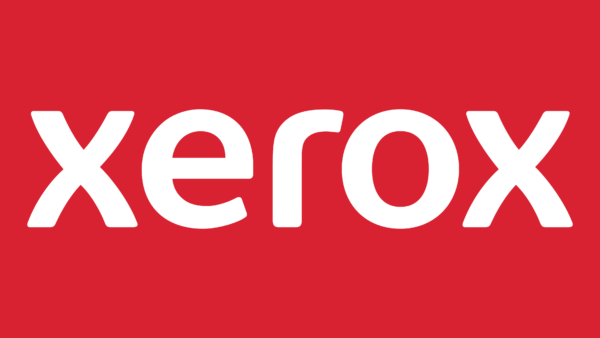Whatever you call it, print management or MPS is improving with age.
Print management solutions remain integral components of MPS and office printing even as office prints continue their downward momentum. Nevertheless, there are plenty of benefits for managing prints, even if there are fewer prints to manage. Cost management, device consolidation, automated supplies fulfillment, and automated meter readings are just a few benefits. Working under the assumption that print management like rock and roll is here to stay, let’s highlight the trends currently defining the market for print management solutions.
More Choices
The crowded print management field includes legacy print management solutions PrintFleet, FM Audit, Print Audit, PaperCut, and Tigerpaw. Newer to the arena here in the U.S. are MPS Monitor, data collection solutions from FKM, distributed by Predictive Insight, and fleet management solutions such as KPAX, distributed by ACDI. All are raising the bar for print management.
Smarter Customers
Customers are much more knowledgeable about MPS, according to Corey Rivard, president of FlexPrint, Inc. “An educated customer is not bad in that they understand what they’re buying,” he observed. “In the early days of MPS, the early 2000s, it was hard for customers to understand what MPS was about. Now they understand it and want it, so we have to be that much more innovative to beat the competition.”
Smarter customers, in Rivard’s view, drive technology and innovation. As a result, that’s motivating FlexPrint, an organization built on MPS, to push the envelope on technologies and differentiate itself in how it goes to market and services the customer. That means leveraging technology to drive overall delivery. Although Rivard declined to provide specific details on how FlexPrint is pushing the envelope, he said “we’re looking at the way we deliver services and products through a new lens so we’re not doing it the same way as everybody else and we’re telling a different story—a story that creates a better result for the customer.”
Vertical Opportunities Abound
For dealers looking to grow their MPS business, that means targeting the verticals where the action is. As Bob Dylan sang, you don’t need a weatherman to tell which way the wind blows, especially during the pandemic. Think manufacturing, transportation, and retail, and you’re on the right track. “You have to pick the right verticals,” said Rivard. “For us, it’s more about where we’re focusing our energy in terms of getting the business because the opportunities are still strong, you just have to find them.”
While some see opportunity with remote and hybrid workers, Rivard does not. “I’m not going to focus on work from home, volumes are too small. If everybody starts working from home, that’s going to drive growth in other segments. If I’m sitting at home and everything I need gets delivered, that’s going to drive transportation.”
According to Josh Lane, president of ACDI, one vertical that is rocking is healthcare, specifically behavioral health, and his team is pointing their dealer partners in that direction. “When we tell dealers to go to Google maps and type in behavioral health, they’re shocked,” he said. At a recent meeting in Pittsburgh, a dealer pulled up nearly 100 behavioral health locations on Google maps—none of whom was an existing customer.
Education is another vertical where Lane sees opportunity. “In education, you have billions of dollars given to each state, and they have a couple of years to spend it. We want to get that earmarked towards technology.”
Data Dump
Data collection is an important element of any print management solution. DCA (data collection agent) technology is improving, evidenced by the introduction of the first self-healing DCA from EKM Insight, distributed in North America by Predictive Insight. “Most remote service management platforms use a DCA installed within the end-user network environment,” said Ed McLaughlin, co-founder of Predictive Insight in a press announcement issued earlier this year. “When the network is out, devices fall off the network. You lose critical data and also often need to restart the devices, this takes people, time, and money. The EKM solution resolves those problems without intervention.”
FlexPrint has used data to help customers make better decisions since 2005 and says the technology is vastly improved today. “Now we’re using those millions of data points to make better decisions about how to run our business and deliver that ultimate service to the customer,” said Rivard. “It’s always been critical, but there’s new ways to use data that we can all embrace and drive efficiencies in our business.”
Cloud-Based Solutions
While on-premise print management solutions are not completely out of vogue, many of the latest print management solutions leverage the cloud, creating more opportunities for dealers selling these solutions.
ACDI’s Lane has seen increased interest for cloud data solutions in the SMB and midsize market after the introduction earlier this year of PaperCut Hive. Hive is a cloud-native, self-healing, SaaS solution, which Lane says appeals to progressive dealerships. “Hive might be limited on features now, but it provides enough enablement where it can be adopted quickly,” he emphasized. “It’s more of a nudge towards a complete end-to-end solution. I look at the evolution of our product and every other manufacturer trying to incorporate more functionality into their solutions, and if you can do it in a lightweight fashion, you can put something out there that is easily understood, easy to say yes to, and easily used and maintained by the end customer.”
The cloud is driving developments in remote remediation, helping ensure that dealer service techs are mostly out of sight but not completely out of mind. Not exactly a new trend, but one perfectly positioned for a pandemic. As a provider of consumables, Supplies Network has its fingers in the MPS till with its mpsSELECT portfolio of services and solutions, which integrates with most print management solutions. “Because we’re a layer removed, we’ve had to incorporate the cloud and use our algorithms around supplies replenishment and break-fix service to remotely manage these environments,” said Sarah Custer, vice president, services and solutions, Supplies Network. “We continue to see a lot of interest from resellers in remote services.”
Artificial Intelligence
We don’t want to debate whether algorithms used for supplies management are AI or not. As FlexPrint’s Rivard observed, “AI is important, but you have to look at the definition of AI because what some people call AI is just math. Using an algorithm for when to ship a toner cartridge is not AI. But AI is a potential differentiator for sure. AI, to me, is where we actually use the data, and the machine learns from the data and helps us drive the results. Think about our business, if we can preplan every service call and get every toner cartridge to show up five minutes before it was needed, that would be perfect. AI can help us get there.”
MPS Monitor, based in Italy, is aggressively recruiting dealers in the U.S. while at the same time enhancing its products and launching new partnerships. It recently announced a set of new features targeted at improving supplies monitoring, shipments, and analytics. The new features were released under the brand name of MPS Monitor Supplies Intelligence. This platform can predict on which day each single toner or photoconductor in each printer will reach end-of-life and when it will need to be replaced. It also determines how many pages the consumable in each device is expected to produce in its total life, and how it may differ from the standard yield declared by the manufacturer. It can also calculate a value for the average toner coverage of each device and consumable cartridge.
For MPS Monitor CEO Nicola De Blasi, leveraging AI in the company’s print management offerings leads to operational efficiency for the dealer.
“The way dealers can grow more is to focus on operational efficiency, which means using more innovation solutions and the cloud,” he said. “Dealers have more devices and DCAs to manage now because of people working from home and personal devices. DCAs are a big issue because you need someone to load the connections, and the more DCAs you have, the more costs you have. The only way to get profits is operational efficiency.”
He means using the latest print management technology allows the dealer to have fewer people in their organization to manage more devices than in the past. “If you [had one person] managing 2,000 devices, you could [now] have one person managing 5,000 devices so you have less costs,” explained De Blasi. “One person instead of three means you have solid operational efficiency.”
Securing the Solution and the Data
Security is a growing concern for every business, and print management companies are enhancing the security of their products, especially since managing prints also means tracking and managing data. MPS Monitor recently announced that its MPS solution is SOC 2 Type 1 compliant, validating its efforts to comply with recognized industry standards and provide what it calls the most secure cloud infrastructure for remote monitoring and management of print devices. Recently, its security methodology, platform, and policies were validated by Keypoint Intelligence after a detailed assessment.
“Security is a fundamental component of MPS Monitor’s culture and strategy,” observed De Blasi. “Everything we do is centered on protecting user’s information and IT assets. The SOC 2 Audit is further independent proof of MPS Monitor’s security posture which gives new and existing customers peace of mind knowing that their security is our first priority. Our Information Security Management System, now audited as compliant to both ISO/IEC 27001 and to SOC 2, provides the highest security profile currently available in our industry.”
Another example is GreatAmerica Financial Services’ MPSecure program, which educates providers on network security risks associated with using unmanaged personal printers and scanners. Since last year, that program has been providing financing options for technology used in at-home print environments.
Adjacent Opportunities
It’s a natural assumption that print management and MPS are associated with traditional print devices such as printers and MFPs. That is changing and continues to change. “When volumes were down, a lot of our partners were looking for logical adjacencies in the print environments that they already manage and ways can they could get more share of wallet while volume is down,” observed Custer.
That’s where Supplies Networks’ Barcode SELECT Program is creating new opportunities. With the Barcode SELECT program, dealers selling Zebra brand printers could manage label and wristband replenishment. “There’s a lot of interest in incorporating that into managed print environments,” reported Custer, who added that FM Audit has helped make these devices read data in a similar way to an A3 or A4 device where the dealer can manage these devices proactively. “And they are adding more data points that we are looking to pull in,” said Custer. “Today, it’s only around wristbands and labels. In the future, we’re looking to pull in data around printheads and other items in those devices that we would be able to manage proactively.”
Lexmark is another company expanding the boundaries of print management with its recent introduction of the Lexmark Optra IoT Platform, based on the IoT platform used in its managed services business. “Drawing on our deep IoT and industry expertise and leveraging our engineered IoT platform, we are helping other makers of connected devices achieve similar business outcomes as we have seen ourselves,” wrote Phil Carter, director of IoT and managed print services for Lexmark in a blog on the Lexmark website. “Replace ‘printer’ with, for example, ‘medical imaging,’ ‘industrial mining,’ or ‘banking kiosk’ equipment and you get the picture. We are unlocking the same business outcomes for makers of these other connected device makers as we have done for our own managed print services business – predictive services, asset optimization, systemic innovation, and as-a-service engagements.”
Access Related Content




